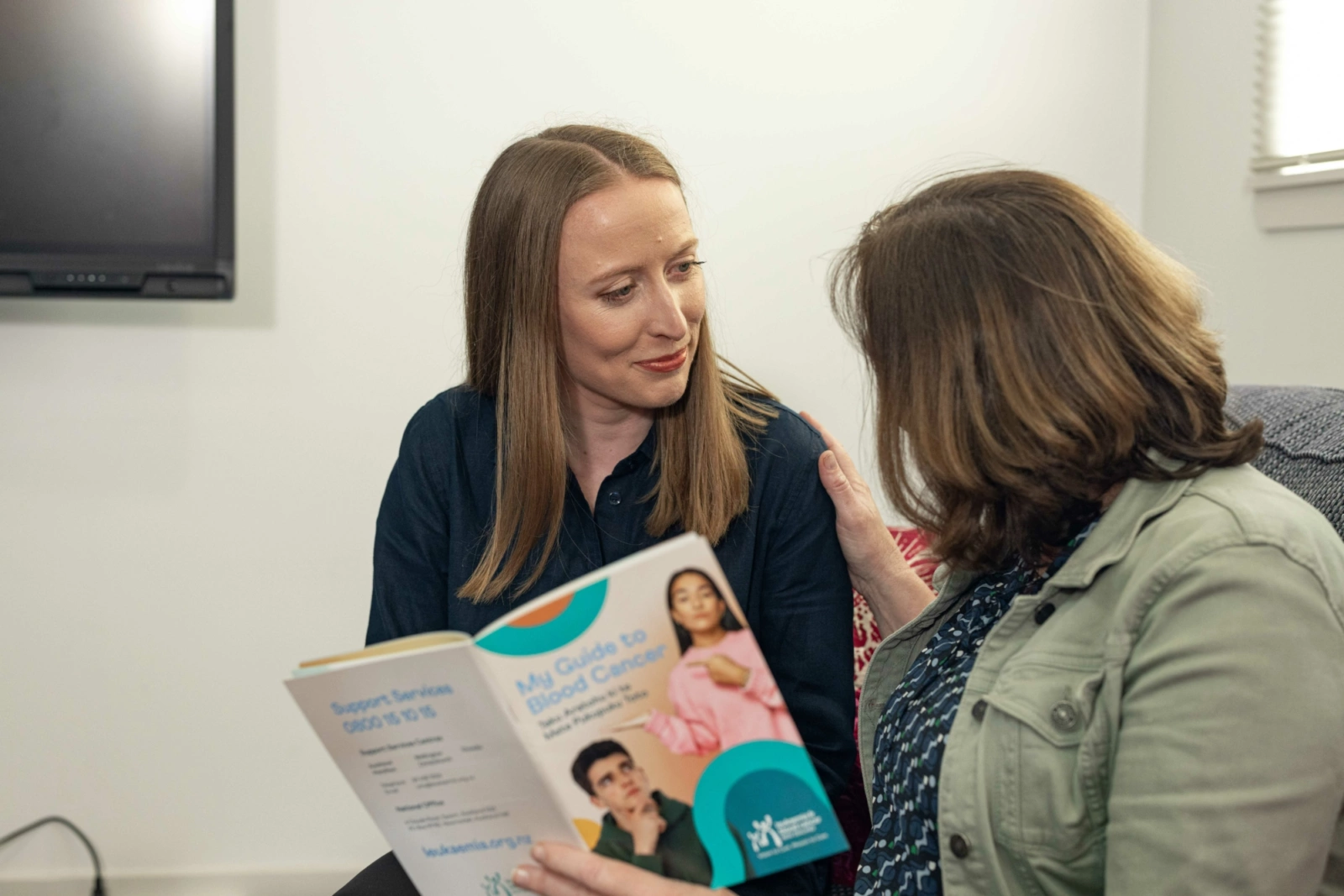What is ALL?
Acute lymphoblastic leukaemia (ALL) is a type of cancer of the blood and bone marrow. ALL occurs when the bone marrow makes too many immature white blood cells, called lymphoblasts or leukaemic blasts.
ALL is the most common type of leukaemia in children. It also occurs in adolescents and adults but with less frequency. This type of leukaemia can appear suddenly and progress rapidly.
Signs and symptoms
Signs and symptoms of ALL will vary from person to person. It is common for someone with ALL to feel a loss of wellbeing because of the lack of normal, healthy blood cells.
Anaemia (low haemoglobin)
- Lack of energy (lethargy)
- Feeling tired all the time (fatigue)
- Shortness of breath, especially when exercising
- Dizziness
- Pale skin
Bleeding and bruising (low number of platelets)
- Bruising easily
- Minor cuts or injuries that take a long time to stop bleeding
- Frequent or severe nosebleeds or bleeding gums
- Red or purple pinhead-sized spots on the skin called petechiae
- Heavier or more frequent menstrual periods
Infections
- Common signs and symptoms of infection include:
- Fever (high temperature)
- Shivering or rigors
- Coughing up yellow or green phlegm
- Fatigue or extreme tiredness
Common types of infection in people with ALL may include:
- Chest infections (pneumonia)
- Cellulitis (a skin infection causing redness, swelling and tenderness that can spread)
- Viral colds and influenza (head cold or flu)
- Shingles (a rash with tiny blisters, usually localised to one side or area of the body)
Other symptoms of ALL
- Recurrent drenching night sweats
- Unexplained weight loss
- Loss of appetite
- Bone or joint pain
- Enlarged lymph nodes
- Swelling and pain in the abdomen
Causes
The cause of ALL is largely unknown. ALL is thought to develop after DNA is damaged, causing genetic mutations (errors) and the cause of most DNA mutations is replicative error. We do know that you cannot catch ALL from someone else.
There are some risk factors that may increase the chances of someone getting ALL. Having a risk factor does not mean someone will definitely get ALL and some people will still get ALL even though they don’t have any risk factors.
Risk factors include:
- Being exposed to large doses of radiation
- Having certain genetic conditions, e.g. Down syndrome (trisomy 21)
- Being exposed to X-rays before birth
- Past chemotherapy treatment
- Having certain changes in the chromosomes or genes
Diagnosis
ALL is diagnosed by examining samples of blood and bone marrow.
Blood is taken from a vein or finger prick and sent to a laboratory (lab) where it is looked at under a microscope. If ALL is present the blood sample will show the presence, sometimes in great quantities, of blast cells (immature cells).
A bone marrow biopsy is a test where a doctor takes samples of your bone marrow and sends them to the lab to be looked at under a microscope and analysed. If ALL is present, the bone marrow sample will show excessive numbers of blast cells, usually resembling those already identified in the blood. Normal bone marrow contains around five per cent of blast cells. However, with ALL this can increase to 50-95 per cent.
Once the diagnosis is made, blood and bone marrow cells are examined further using a number of specialised laboratory tests to provide more information about the exact type of disease, the likely course of disease and the best way to treat it.
Treatment
Without treatment, the bone marrow will produce increasing numbers of abnormal cells and the production of normal blood cells will keep reducing. A sharp reduction in the number of red blood cells in the blood causes anaemia and the shortage of normal white blood cells and platelets becomes more severe.
The aim of treatment is to achieve complete remission with normal blood and bone marrow.
The two main treatments for ALL are chemotherapy and a stem cell transplant (also called bone marrow transplant). Some people may also need radiotherapy. Please see our treatment section for more information on treatment for ALL.




